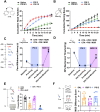This is a preprint.
Psilocybin has no immediate or persistent analgesic effect in acute and chronic mouse pain models
- PMID: 40672181
- PMCID: PMC12265607
- DOI: 10.1101/2025.07.06.663398
Psilocybin has no immediate or persistent analgesic effect in acute and chronic mouse pain models
Abstract
The psychedelic psilocybin may have lasting therapeutic effects for patients with chronic pain syndromes. Some clinical and preclinical data suggest these putative benefits derive from direct analgesic effects. However, this possibility has not been comprehensively tested in preclinical models. Here, we show that psilocybin is not analgesic over a range of doses across multiple pain assays and models of acute and chronic inflammatory, neuropathic, or musculoskeletal pain in mice.
Conflict of interest statement
CONFLICT OF INTERESTS B.D.H. is on the scientific advisory boards of Journey Clinical and Osmind, and is a paid consultant to Arcadia Medicine, Inc, Tactogen, LLC, and Vida Ventures, LLC. R.C.M. is now on leave from Stanford, functioning as Chief Scientific Officer at Bayshore Global Management. R.C.M. is on the scientific advisory boards of MapLight Therapeutics, Bright Minds, MindMed, and Aelis Farma.
Figures




References
-
- Goodwin G. M. et al. Single-Dose Psilocybin for a Treatment-Resistant Episode of Major Depression. N Engl J Med 387, 1637–1648 (2022). - PubMed
-
- Dworkin R. H. et al. If the Doors of Perception Were Cleansed, Would Chronic Pain be Relieved? Evaluating the Benefits and Risks of Psychedelics. The Journal of Pain 23, 1666–1679 (2022). - PubMed
Publication types
Grants and funding
LinkOut - more resources
Full Text Sources
